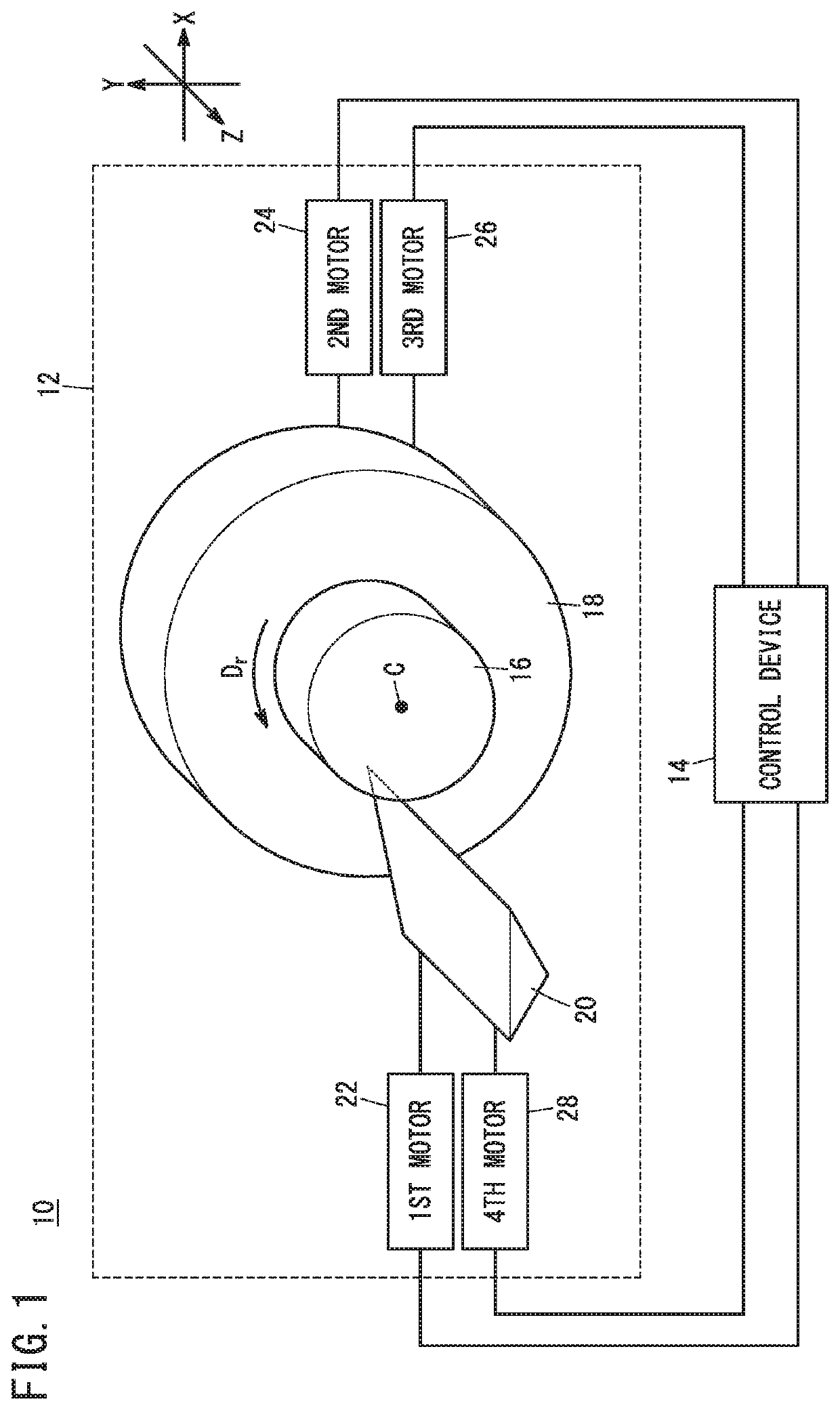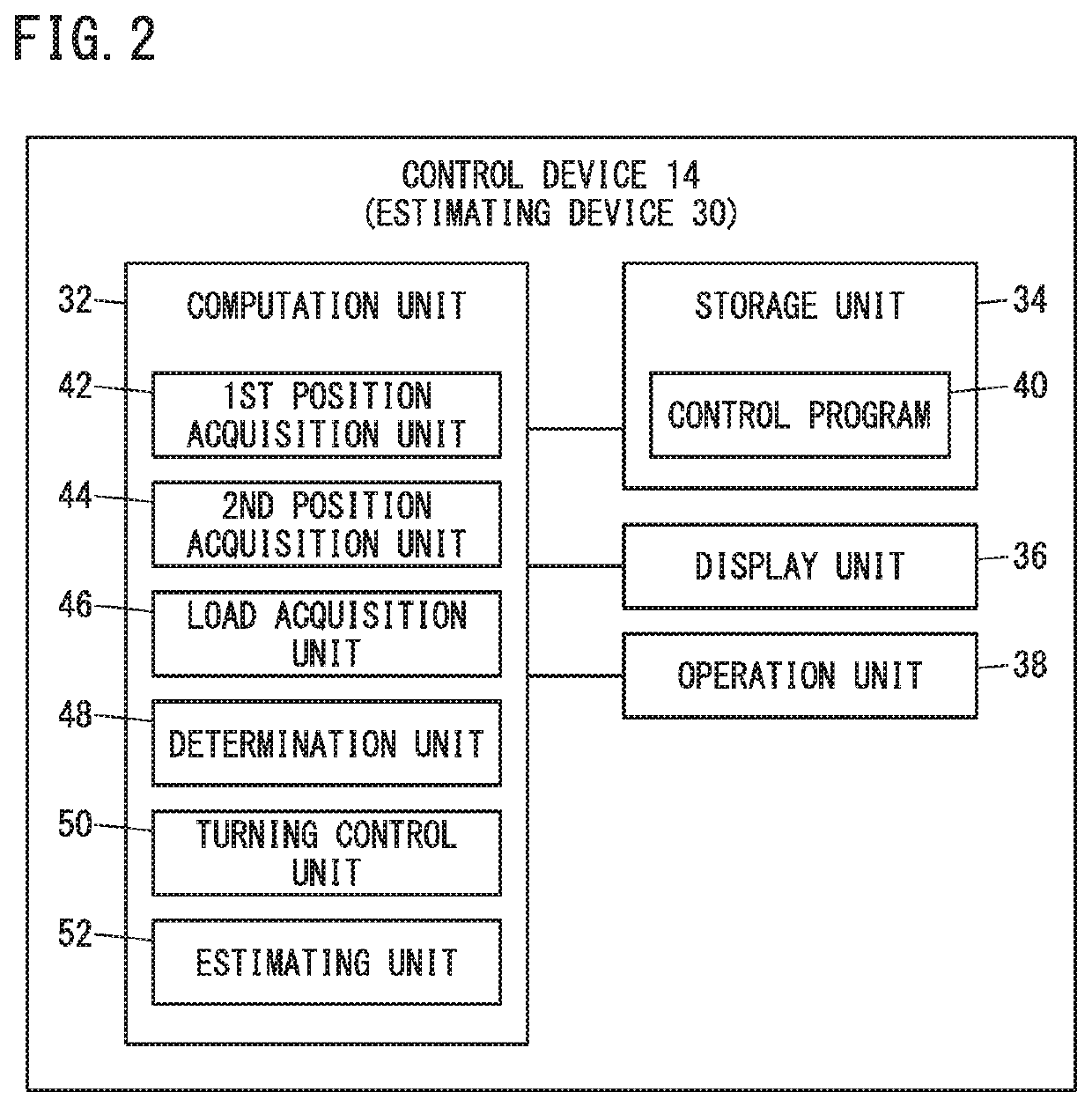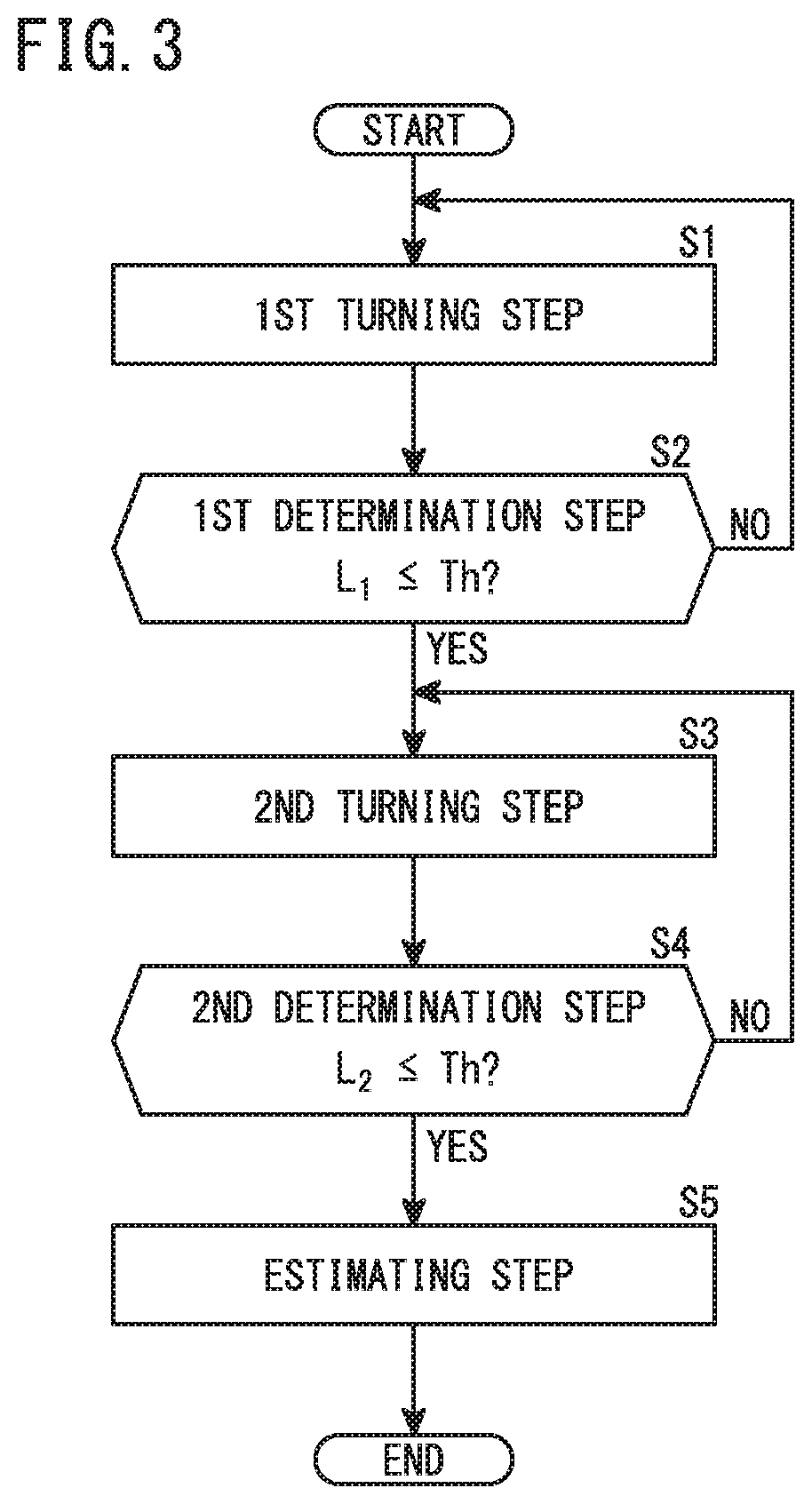Estimating device and estimating system
a technology of estimating device and estimating system, which is applied in the direction of electrical programme control, program control, instruments, etc., can solve the problems of inability to remove the above-mentioned remaining portion and inability to trial and error, and achieve the effect of accurately and easily estimating the position of the rotary axis
- Summary
- Abstract
- Description
- Claims
- Application Information
AI Technical Summary
Benefits of technology
Problems solved by technology
Method used
Image
Examples
first embodiment
[0024]FIG. 1 is a schematic configuration diagram of a machine tool 10 according to a first embodiment. In the present embodiment, a first direction (X-axis direction), a second direction (Y-axis direction), and a third direction (Z-axis direction) are directions that are perpendicular to each other.
[0025]The machine tool 10 according to the present embodiment is equipped with a processing machine 12 and a control device 14. The processing machine 12 is a machine that subjects a machined object (workpiece or object to be machined) 16 to a turning process (lathe turning process). The machined object 16 is not of a configuration of being possessed by the processing machine 12 (see FIG. 1).
[0026]The processing machine 12 of the present embodiment, although not limited thereto, is also referred to as a precision processing machine, which serves to machine the machined object 16 according to a command with a machining accuracy of less than or equal to 100 nm (nanometers). The estimating ...
modification 1
(Modification 1)
[0081]The estimating unit 52 may select, as the first directional position Px, an average value of the first directional position of the tool 20 at a time when a first load has become less than or equal to a threshold value Th, and the first directional position of the tool 20 at a time when a second load has become less than or equal to a threshold value Th.
[0082]In this instance, the first load is a first directional load based on the fluctuation range of deviation of the position acquired by the first position acquisition unit 42 from the position indicated by the first command. Further, the second load is a first directional load based on the drive current or the torque of the first motor 22. The first load and the second load can be acquired by the load acquisition unit 46.
[0083]Further, the estimating unit 52 may select, as the second directional position Py, an average value of the second directional position of the tool 20 at a time when a third load has beco...
modification 2
(Modification 2)
[0086]FIG. 8 is a schematic configuration diagram of the estimating device 30 according to a second modification.
[0087]The estimating device 30 (the control device 14 in which the estimating device 30 is provided) may be further equipped with a compensation unit 54. The compensation unit 54 compensates the first directional position Px based on the first directional load L1, and compensates the second directional position Py based on the second directional load L2.
[0088]The tool 20 that undergoes relative movement with respect to the machined object 16 while performing cutting receives a repulsive force from the machined object 16. Accordingly, there is a concern that, from an extremely detailed point of view, the first directional position Px and the second directional position Py selected by the estimating unit 52 may deviate respectively from the actual position of the rotary axis C in the first direction and the actual position of the rotary axis C in the second ...
PUM
 Login to View More
Login to View More Abstract
Description
Claims
Application Information
 Login to View More
Login to View More - R&D
- Intellectual Property
- Life Sciences
- Materials
- Tech Scout
- Unparalleled Data Quality
- Higher Quality Content
- 60% Fewer Hallucinations
Browse by: Latest US Patents, China's latest patents, Technical Efficacy Thesaurus, Application Domain, Technology Topic, Popular Technical Reports.
© 2025 PatSnap. All rights reserved.Legal|Privacy policy|Modern Slavery Act Transparency Statement|Sitemap|About US| Contact US: help@patsnap.com



